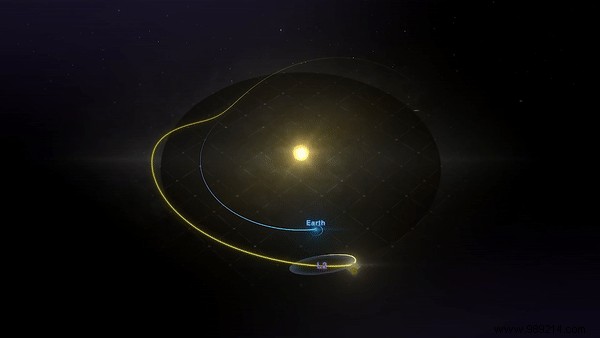The James Webb Telescope continues its journey, en route to Lagrange Point 2 more than 1.5 million kilometers from Earth. Positioned in orbit, the most powerful observatory ever launched in space will focus on the first stars and galaxies, but also on several nearby exoplanets. But concretely, when will we be able to appreciate his first images?
The James Webb Telescope has completed its precise deployment process in space. The mission controllers have indeed closed the deployment of its huge sun visor, before continuing with the opening of its secondary mirror. The telescope has also just successfully deployed the last segment of its huge primary mirror, responsible for reflecting light from the depths of the cosmos.
If all goes as planned, the telescope will then arrive around Lagrange point 2, its final destination, on January 23, 29 days after its launch .
However, don't expect to enjoy its first images as early as the end of January. At this point, the mission team will need to power and test the observatory's four science instruments, namely its Near Infrared Camera (NIRCam), Near Infrared Spectrograph (NIRSpec), Mid Infrared Instrument (MIRI), and FGS-NIRISS, an instrument combining a fine guidance sensor, a near-infrared imager and a spectrograph.
NASA will also need to precisely align the eighteen primary mirror segments, so that they can act as a single light-gathering surface. Finally, the following weeks will involve final calibrations and completing the commissioning process.

Science Operations should finallystart in six about months . According to Joel Primack, University of California, Santa Cruz, interviewed by Newsweek, the first months of observations will be focused on several distant galaxies, some formed only a hundred million years after the Big Bang.
The reason the JWT will allow astronomers to go further back in time than before is that it will be able to observe the cosmos in the infrared regions of the electromagnetic spectrum, at longer wavelengths than Hubble. This will allow him to see objects at greater distances, and therefore go back further in time.
Also, a series of "first light" images could be shared by NASA as early as this summer . Other images of better quality will arrive later. However, we still do not know exactly which objects will be targeted, as the requests submitted have been numerous.